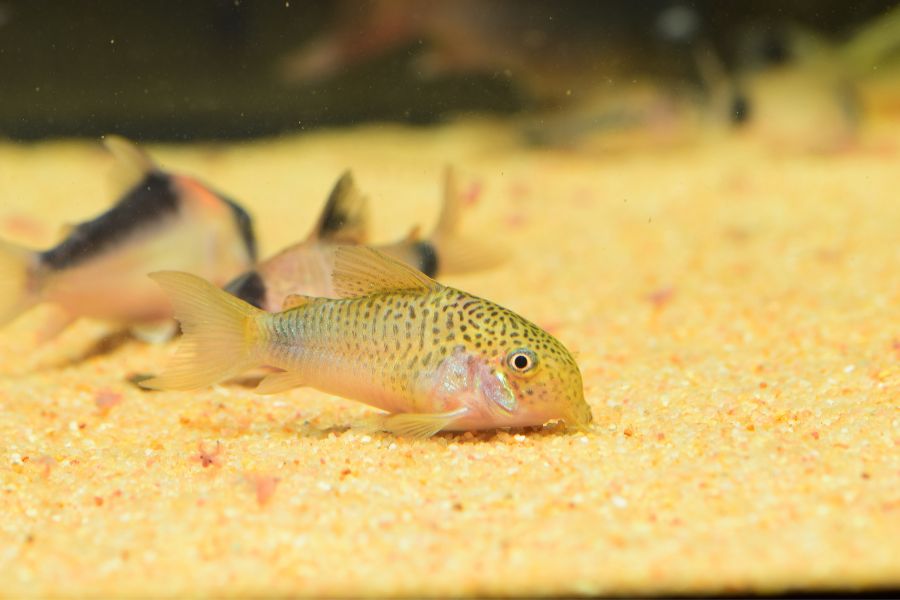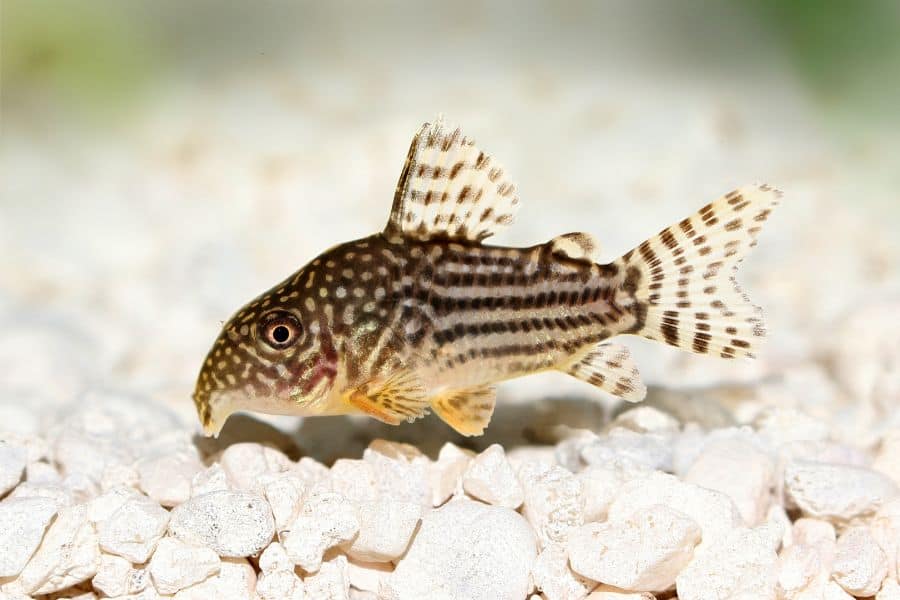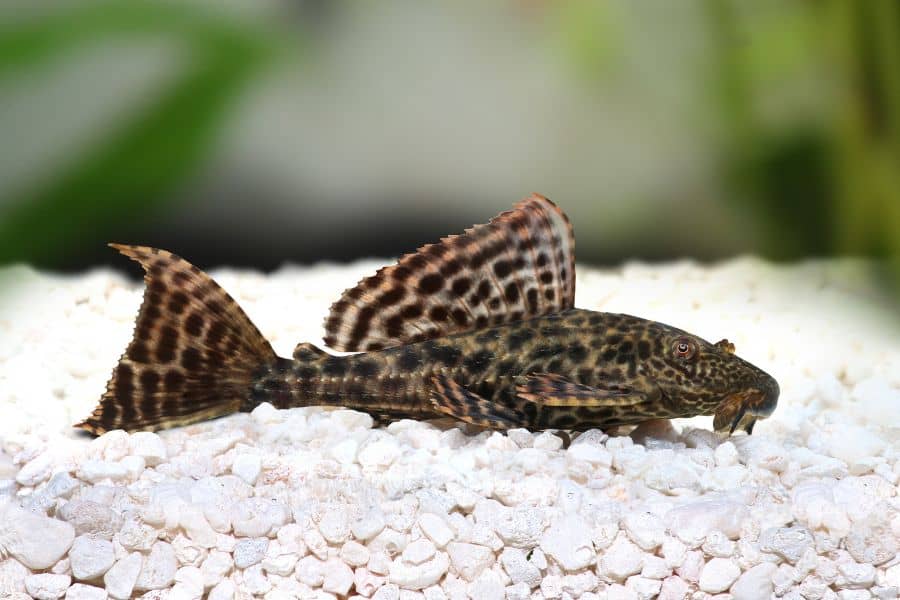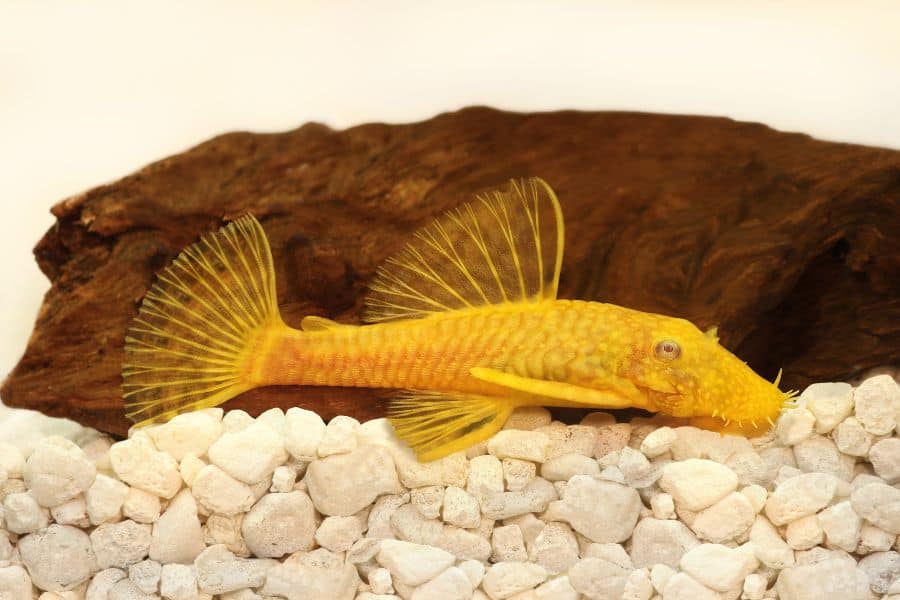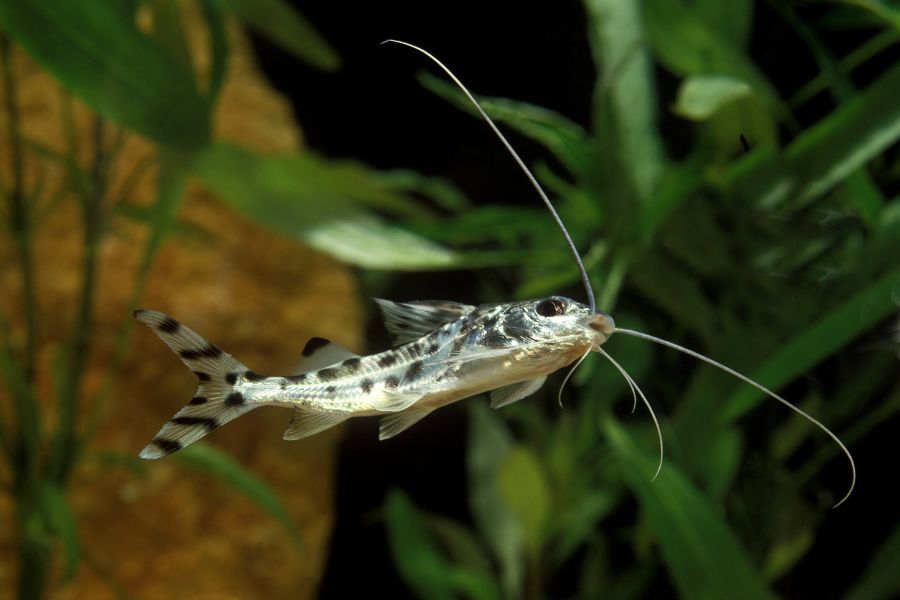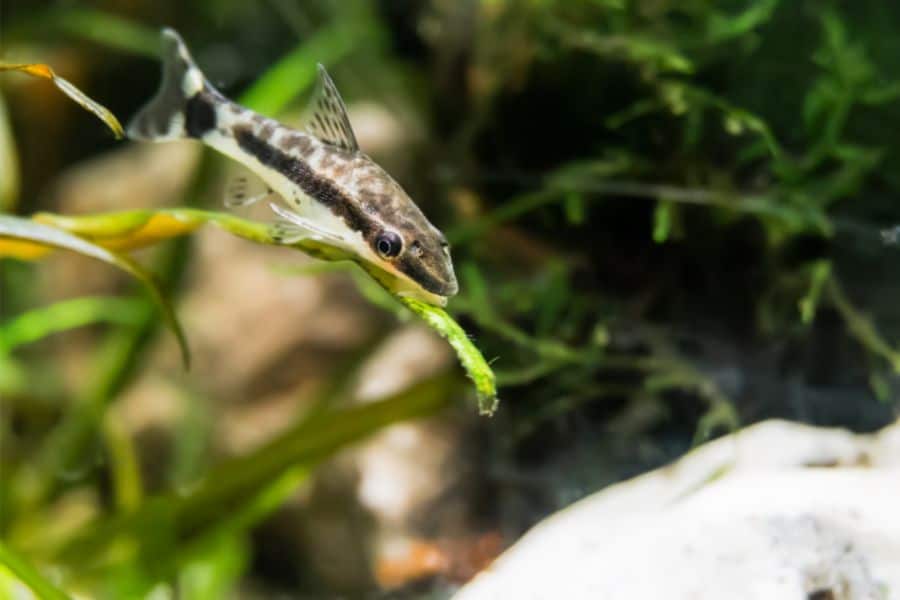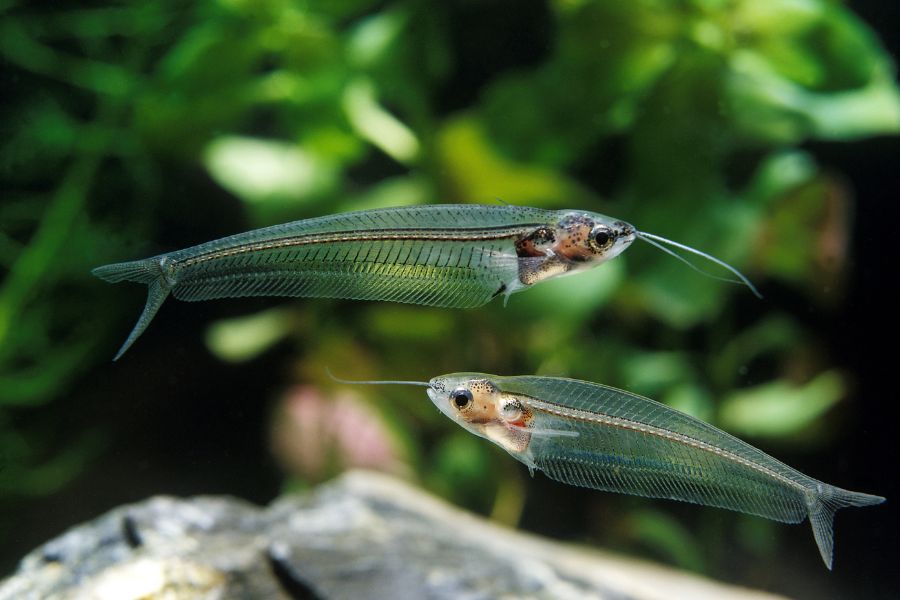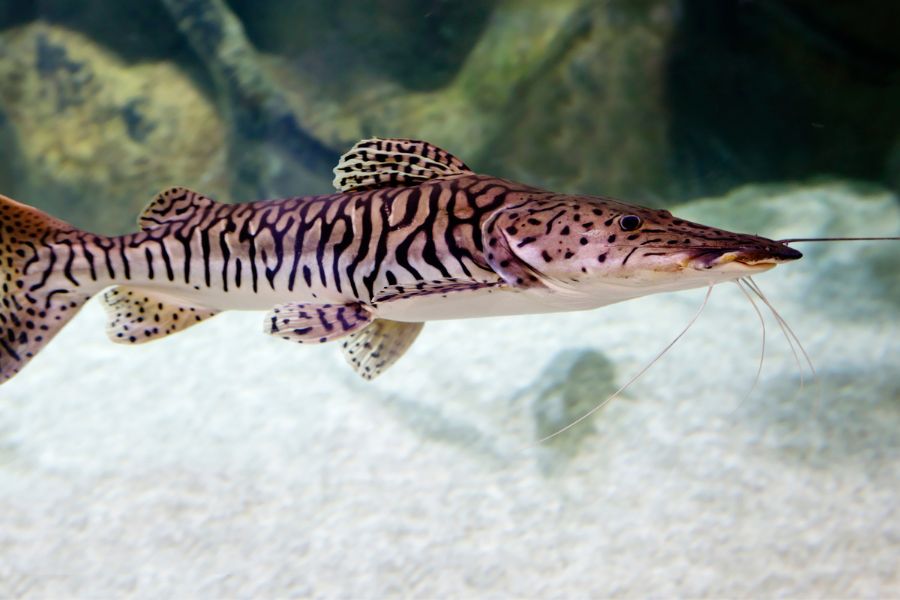There are over 2,900 different types of aquarium catfish, and more than half of that population lives in North America.
Also, most catfish are freshwater fish that can fit into a variety of hobbyist aquarium habitats.
With such a wide range of options, it is easy to get overwhelmed with which one you should get for your tank.
In this article, we will dive into the most unique freshwater catfish you can find in the market and also help you identify different species from their varying features.
What is a Catfish?
A Catfish is any fish that falls under the order Siluriformes or Nematognathi in scientific terms. Appearance-wise, you can identify a catfish from its long barbels that look like cat whiskers, hence the name catfish.
It is important to note that not all types of catfish have easily recognizable whiskers. Some have one pair of barbels that can be hard to see, while others come with long barbels that can be seen from afar.
As part of the Siluriforme order, the most identifiable features of the catfishes are their lack of scales and bodies that are either naked or covered with bony plates.
There are over 38 different catfish types under Siluriforme, most of which can be found in many parts of South and Central America. Of these types, the most popular aquarium catfish are categorized under the groups Corydoras, Synodontis, and Plecostomus.
Catfish are distributed throughout the world on many continents and seas. You will find a wide range of species in many aquariums and pet shops with ease as compared to other fishes in the market. The most common ones in pet stores are the Corydoras. A close second is the Suckermouth armored catfish.
Catfish are bottom feeders, meaning that they feed almost always at the bottom of the water surface. Most of them are negatively buoyant, meaning that they can swim backward, sinking instead of floating due to their light gas bladders compared to their heavy heads.
Their sizes vary from as small as two inches to as tall as one foot. It is important to keep in mind that most aquarium freshwater catfish only grow between 4 to 8 inches. Below are the best aquarium catfish to choose from:
15 Best Aquarium Catfish Types
1. Cory Catfish/Corydoras
| Common Names | Cory Cats, Cory Fish |
| Scientific Name | Corydoras |
| Average Adult Size | 1 to 4 inches |
| Lifespan | 5 – 10 years |
| Minimum Tank Size | 20-gallon tanks |
| Ideal Temperatures | 70 – 80 degrees Fahrenheit |
| Ideal pH Levels | 6.0 – 8.0 |
| Diet | Omnivores |
The Cory catfish (Corydoras) is a tropical species that is widely distributed in South America and many parts of the Atlantic Ocean. Their bodies are protected with bony plates, and their face has three pairs of barbels. Colors vary from one type of Cory catfish to another.
They are hardy fish and come in different shapes and sizes. They constitute over 160 different species. Some of the most popular types of Cory catfish include bandit Cory, Julii Cory, Bronze, emerald, green, albino, Panda Cory, skunk, pepper, and the three-stripe Cory.
All of these types are common in community tanks and thrive with little ease since they are hardy. This is the catfish you should opt for if you are a beginner.
Also, they are bottom feeders who also feed on leftovers. This makes them great tank cleaners, but they should not be used as a substitute for a thorough tank cleaning procedure.
Due to their small sizes, Cory catfish do not eat a lot; feeding for about five minutes with small chunks of fish flakes and pellets is more than enough.
It is best to keep the Corydoras in groups of about six or more. Their non-aggressive temperament is great for shared community tanks, but you should pair them with aggressive species.
Also Read: Cory Catfish Eggs Guide: How to Care For?
2. Upside Down Catfish
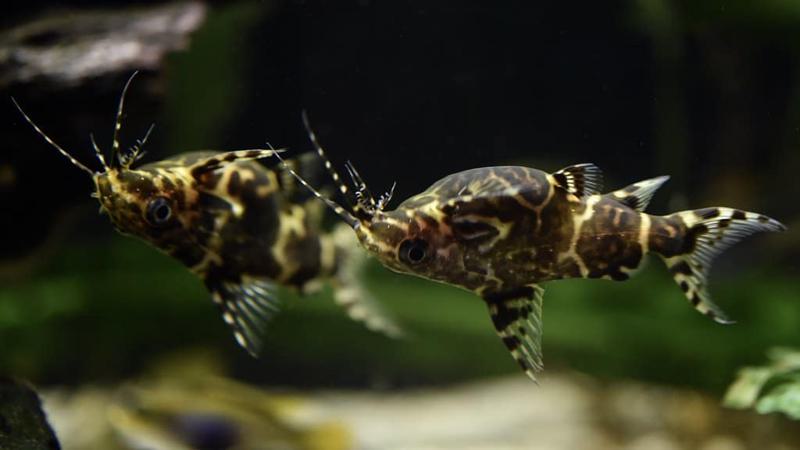
| Common Names | Mochokid catfish, blotched upside-down catfish, Synodontis catfish, Common Synodontis |
| Scientific Name | Synodontis nigriventris |
| Average Adult Size | 2 to 4 inches |
| Lifespan | 5 years |
| Minimum Tank Size | 10-gallon tanks |
| Ideal Temperatures | 72 – 79 degrees Fahrenheit |
| Ideal pH Levels | 6.0 – 7.5 |
| Diet | Omnivores but prefer a carnivorous diet |
This catfish is among the most unique of the bunch because of its special evolutionary ability to swim upside down. The Common Synodontis does this as a form of adaptation and hunting behavior rather than anything to do with its physical attributes.
The upside-down swimming helps the catfish eat algae from the bottom of plants and other decorations in the tank/wild. It also swims upside down because of how it has to maneuver on the undersides of branches and logs in the wild.
The Synodontis genus (with over 100 species) is the largest of the mochokid catfish, and you may find other fish in the genus that is confused for the upside-down catfish.
This ranegs from the angelicus, aterrima, batensoda, contracta, and nigrita. Ask for the Synodontis nigriventris specifically to avoid getting fake upside-down catfish.
They come with three pairs of barbels featuring large eyes, a large adipose fin, and a forked tail. Colors can vary, but the catfish distinguishes itself from others with its darker hue underside, opposite to what you would see in other catfish.
The upside-down catfish is a peaceful fish but will feed on smaller fish in the tank. Keep lots of plants in the tank with lots of leaves on which the fish can nibble on and scavenge for food.
3. Suckermouth Catfish/Common Pleco
| Common Names | Common Pleco, Plecostomus, |
| Scientific Name | Hypostomus plecostomus |
| Average Adult Size | 10- 20 inches |
| Lifespan | 5 – 10 years |
| Minimum Tank Size | 125-gallon tanks |
| Ideal Temperatures | 72 – 82 degrees Fahrenheit |
| Ideal pH Levels | 6.0 – 8.0 |
| Diet | Omnivores, but mostly a herbivorous diet |
The Common Pleco is the most popular catfish from the Plecostomus group (there are over a hundred different Plecostomus variants). The group is characterized by their long rows of armored plates covering most of the head and body (the lower side of the head and abdomen are naked).
All plecos, or plec, are part of the Loricariidae family commonly found in South and Central America. The most notable aquarium plecos include the Suckermouth catfish here, bristlenose Plecostomus, zebra Plecostomus, clown pleco, gold nugget pleco, and the royal pleco.
The suckermouth pleco differentiates itself from its brothers with its sucker-like mouth. The mouth helps the catfish adhere to surfaces and food, which helps in its scavenging escapades.
The suckermouth pleco is known to feed on lots of algae and aquatic plants. This translates to a hardy fish that is easy to care for and will thrive in a plant and algae-filled tank.
The pleco can grow up to 20 inches which are great for an algae-cleaning species but bad for a small tank or hobbyist’s pet. A huge tank is preferable, and it’s best to avoid pairing the catfish with less aggressive small fish. Good tank mates include Congo tetras, neon tetras, and rainbowfish.
4. Bristlenose Pleco Catfish
| Common Names | Ancistrus, bushynose pleco |
| Scientific Name | Ancistrus cirrhosus |
| Average Adult Size | 5 inches |
| Lifespan | 5 – 8 years |
| Minimum Tank Size | 30-gallon tanks |
| Ideal Temperatures | 72 – 82 degrees Fahrenheit |
| Ideal pH Levels | 6.0 – 8.0 |
| Diet | Herbivorous |
Bristlenose Pleco is part of the Plecostomus genus and is more beloved compared to other plecos because of their small size. Unlike the Common Pleco, which reaches 20 inches, the Bristlenose grows up to 5 inches in most aquariums.
Bristlenose is also popular because of its bushy nose that gives its nickname ‘bushynose pleco’. The nose has some attachments that extend from their snouts, making them creepy or fun depending on how polarized they make you.
However, keep in mind that the bushy nose tends to appear after 6 months of age. They also feature bony plates like other Plecostomus but have wider heads and shorter bodies.
Even though they feed on algae, their small sizes do not make them great tank cleaners. It is best to include lots of driftwood in the tank to promote algae growth since the plecos are bottom feeders that love to nibble on algae.
5. Rubbernose Pleco
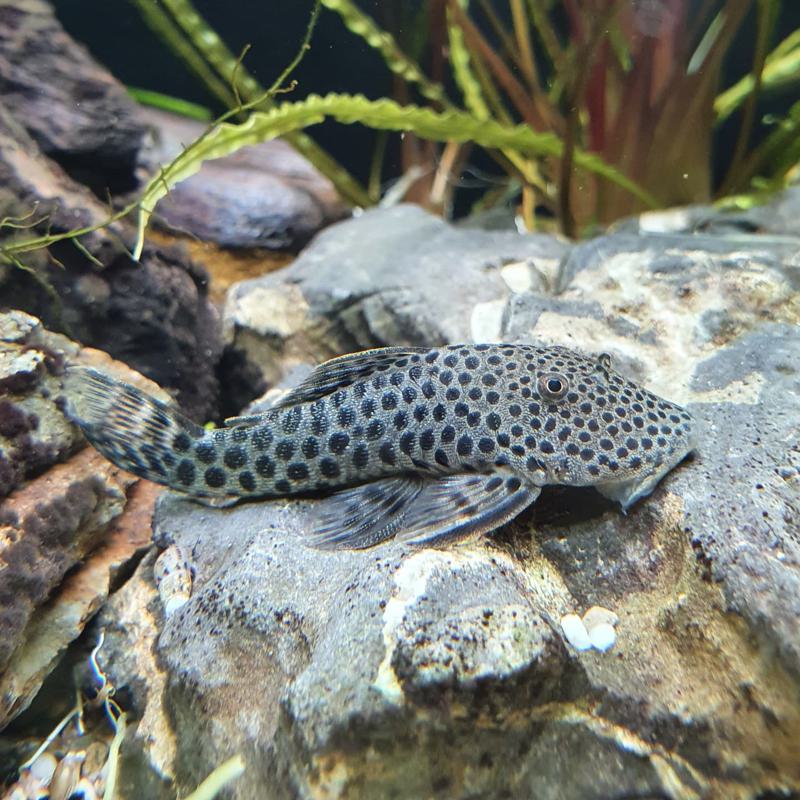
| Common Names | Rubber lipped pleco, |
| Scientific Name | Chaetostoma milesi |
| Average Adult Size | 4 – 7 inches |
| Lifespan | 9 – 10 years |
| Minimum Tank Size | 35-gallon tanks |
| Ideal Temperatures | 70 – 80 degrees Fahrenheit |
| Ideal pH Levels | 6.0 – 8.0 |
| Diet | Omnivores, but an herbivorous diet is highly recommended |
The rubbernose pleco is not so common among aquarists despite its close resemblance and ease of care to the common bristenose pleco.
It is a South American catfish populated in many regions of Columbia and Venezuela. It is among the most common Plecostomus catfish in the wild.
It is a hardy fish that feeds at the bottom like other catfish but also prominently chooses algae over other natural foods. Its long lifespan is great for those who want a long-term tank pet, rubbernose plecos can sometimes live up to 12 years.
Rubbernose has the telltale pleco appearance but feature unique dark lines spread throughout the body from the front of the pectoral fin, and proceed till they get closer to the tail fin. They are also bigger than bristlenose plecos and survive in similar water conditions.
6. Gold Nugget Pleco
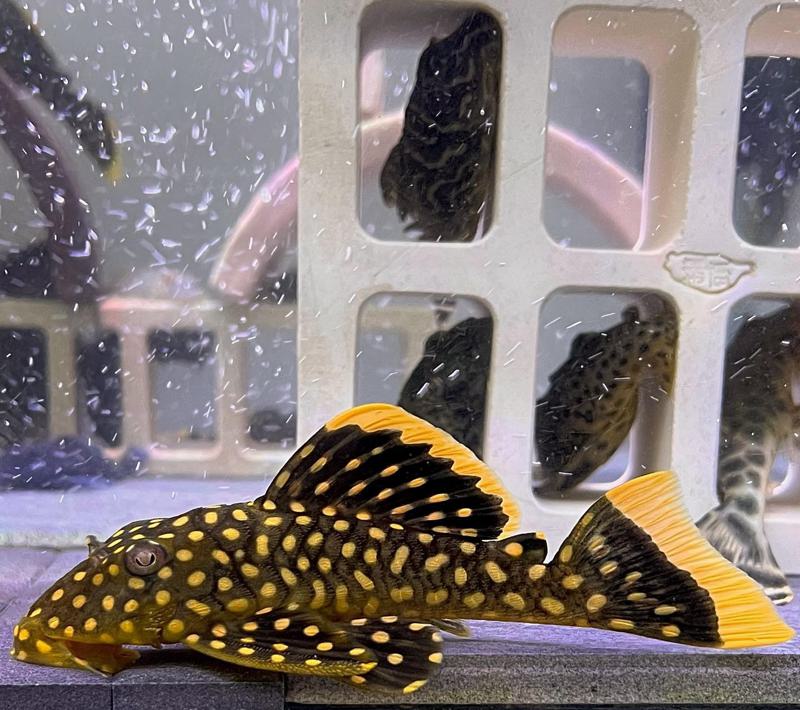
| Common Names | L018, L-18 |
| Scientific Name | Baryancistrus xanthellus |
| Average Adult Size | 6 to 9 inches |
| Lifespan | 4 – 6 years |
| Minimum Tank Size | 55-gallon tanks |
| Ideal Temperatures | 70 – 80 degrees Fahrenheit |
| Ideal pH Levels | 6.5 – 7.5 |
| Diet | Omnivorous |
The Gold Nugget is a stunner for its looks. The armored catfish originates from Brazil and is beloved because of its golden color, which makes aquariums pop and attracts lots of attention.
Most catfishes are not what you would call good looking, they are unique and have quirky features, but most have dulled colors and common hues.
The God Nugget is special, with its dark black body covered in evenly-spaced yellow dots. The ends of its caudal and dorsal fins have a rich yellow color that is brighter than other parts of the body.
Put them in a freshwater tank filled with plants, rocks, and driftwood. They also thrive in a peaceful community and won’t fare well in a tank with territorial plecos like itself.
As bottom feeders, the Gold Nuggets scavenge on algae and any leftovers. A large tank Is better since this species can grow up to 10 inches in a matter of months.
7. Bumblebee Catfish
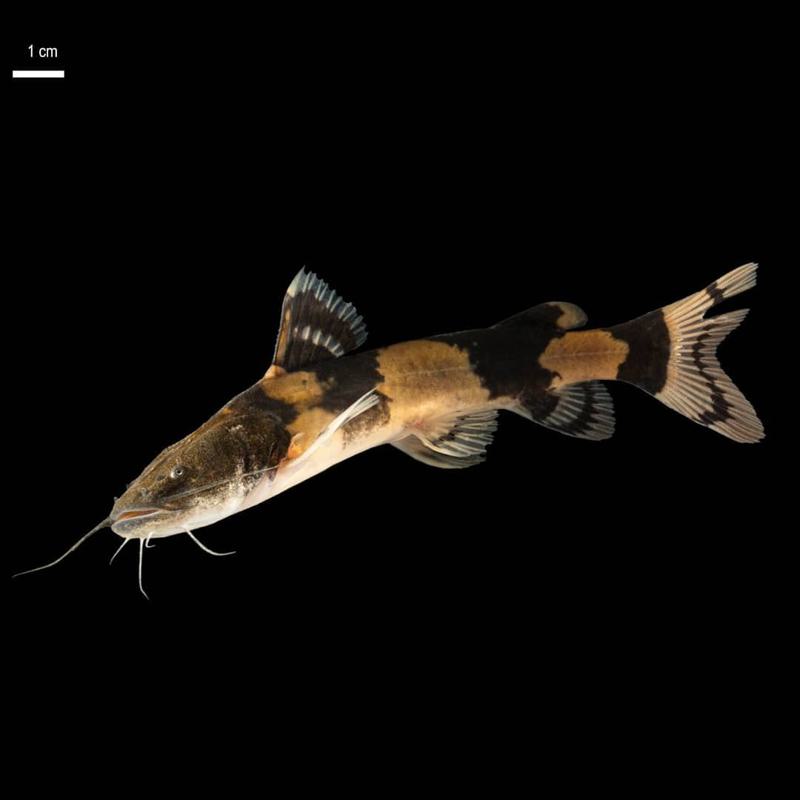
| Common Names | Pseudomystus, false bumblebee catfish, South American bumblebee |
| Scientific Name | Microglanis iheringi |
| Average Adult Size | 3 inches |
| Lifespan | 4 – 5 years |
| Minimum Tank Size | 20-gallon tanks |
| Ideal Temperatures | 70 – 79 degrees Fahrenheit |
| Ideal pH Levels | 6.0 – 8.0 |
Bumblebee has the same yellow and black color combo as the Gold Nugget, but its patterns are different. Its beloved attractive body is made of alternating yellows and blacks that extend from the head to the tail.
They are small hardy fish that are easy to care for. Their temperament is fun for those who prefer a playful pet that makes its colors shake when it moves. Bumblebees prefer plant-filled aquariums that simulate their natural environment.
Please keep in mind that many species in the Pseudopimelodidae family are often called bumblebee catfish or false bumblebee catfish. Some of these include the African bumblebee, Asian, Bumblebee jelly, giant, and mottled bumblebee.
The true bumblebee is the Microglanis iheringi , native to the South American regions, especially Columbia and Venezuela.
8. Chinese Algae Eater
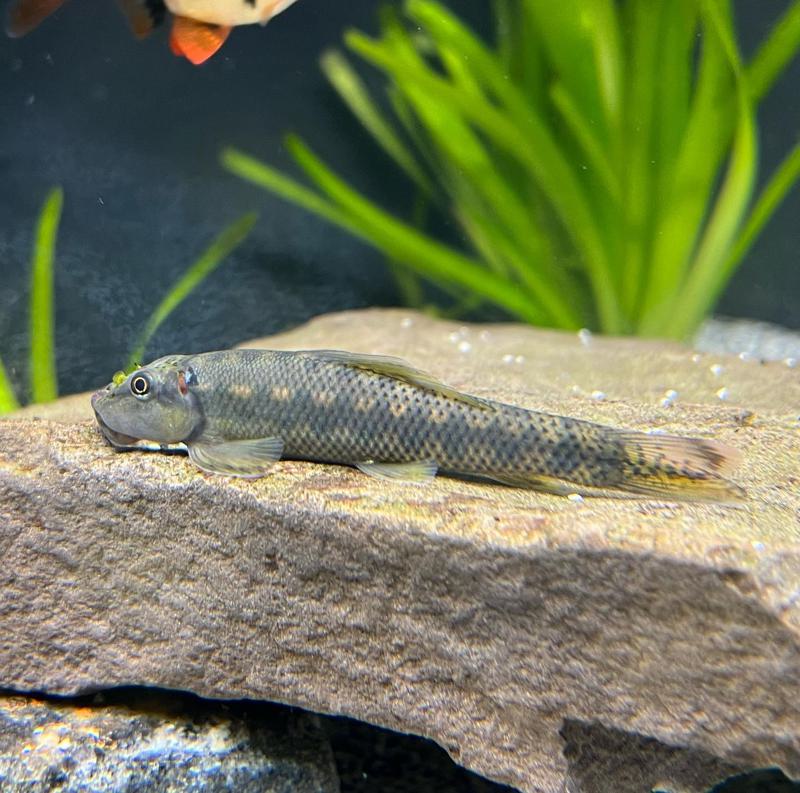
| Common Names | Honey sucker, sucking loach |
| Scientific Name | Gyrinocheilus aymonieri |
| Average Adult Size | Up to 11 inches (typically 5.5 inches) |
| Lifespan | 7 – 10 years |
| Minimum Tank Size | 55-gallon tank for one fish |
| Ideal Temperatures | 74 – 80 degrees Fahrenheit |
| Ideal pH Levels | 6.0 – 8.0 |
| Diet | Omnivores, more carnivorous when they are older |
The Chinese Algae Eater is a rare, aggressive breed of catfish, and is ranked by many as the most aggressive catfish.
It is territorial, and you won’t fall short of many customer complaints about why getting a Chinese algae eater is a bad idea, but there is a good reason to.
Yes, the species will eat even aggressive fish like the rainbow shark and Roseline shark.
But they are fantastic algae-cleaning fish that will make your maintenance procedures less stressful and frequent. This is more so the case when they are younger; they prefer a protein-rich diet as they get older.
The species tend to be more aggressive when they are stressed, especially due to a lack of protein-rich foods. Chinese Algae eaters should also be kept in a large tank with semi-aggressive fish to thrive better and not get stressed easily.
9. Pictus Catfish
| Common Names | Pictus cat |
| Scientific Name | Pimelodus pictus |
| Average Adult Size | 4 – 5 inches |
| Lifespan | 8 – 10 years |
| Minimum Tank Size | 45-gallon tanks |
| Ideal Temperatures | 70 – 80 degrees Fahrenheit |
| Ideal pH Levels | 7.0 – 8.0 |
| Diet | Omnivores, prefer protein-rich foods |
Pictus catfish are distinct because of their longer barbels that extend to almost full body size. The monochromatically colored fish have a greyish hue with black spots and blotches unevenly distributed throughout its body.
They prefer proteins in their diet, which makes them a danger to smaller fish that they can feed on. Regardless, the Pictus cat isn’t an aggressive catfish, and it will get along with many freshwater aquarium fish that are non-aggressive and equally sized.
10. Otocinclus Catfish
| Common Names | Otos, dwarf suckers |
| Scientific Name | Otocinclus genus |
| Average Adult Size | Up to 2 inches |
| Lifespan | 5 – 10 years |
| Minimum Tank Size | 20-gallon tank for up to 10 Otos |
| Ideal Temperatures | 70 – 80 degrees Fahrenheit |
| Ideal pH Levels | 6.5 – 8.0 |
| Diet | Herbivorous |
Otocinclus are among the most harmless, skittish fish you can ever get in your aquarium.
They are hardy and easy to care for with tiny bodies that come in a wide range of colors from the golden Oto to the sebra-colored otocinclus, silver, and the mottled otocinclus with shades of gray, brown, and black.
Hobbyists love them for their shy behaviors and fast swimming capabilities. Like other catfish, the Oto is a nocturnal animal that is most active at night and thrives the most when surrounded by other Otos.
Feed them a herbivorous diet rich in plant matter and bacteria. The fish also feed on algae but prefer commercial algae wafers and vegetables like lettuce and spinach.
If you want to populate your tank with lots of tiny fish that are peaceful and easy to care for, then the Otocinclus catfish is your best pick on this list.
11. Twig Catfish
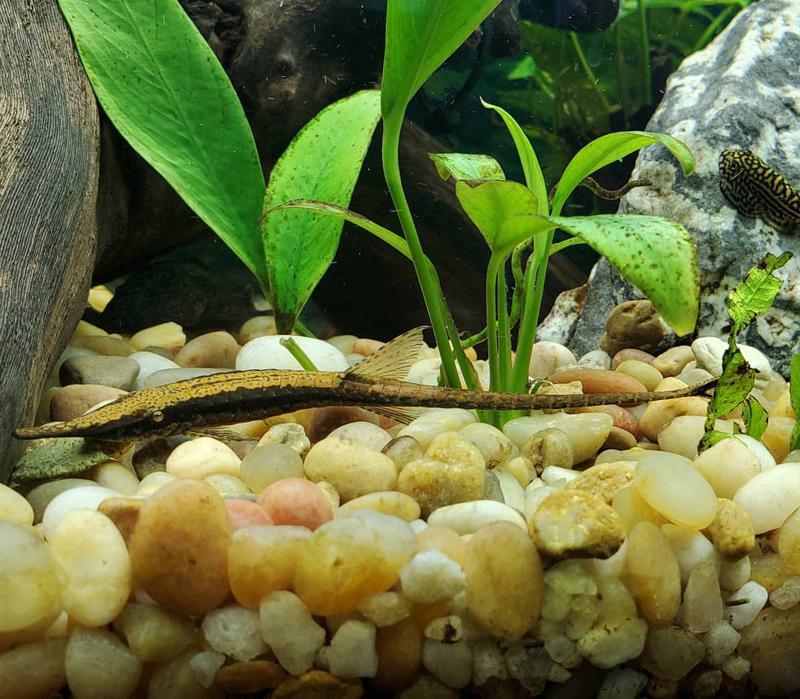
| Common Names | Whiptail catfish, Farlowella catfish |
| Scientific Name | Farlowella acus |
| Average Adult Size | 5 – 6 inches |
| Lifespan | 10 – 12 years |
| Minimum Tank Size | 20-gallon tanks |
| Ideal Temperatures | 70 – 80 degrees Fahrenheit |
| Ideal pH Levels | 6.0 – 8.0 |
| Diet | Herbivorous |
The Twig catfish is fit for a peaceful aquarium and if you want an active algae eater. They are also a good breed because they live for more than 10 years and require little care, a great fit for beginners.
It is a unique species known for its twig-like stature that make it an easy fish to mistake for a stick or branch. It is a skinny catfish with a long body and wider head that makes the body look tapered from the head to the tail.
12. Stripped Raphael Catfish
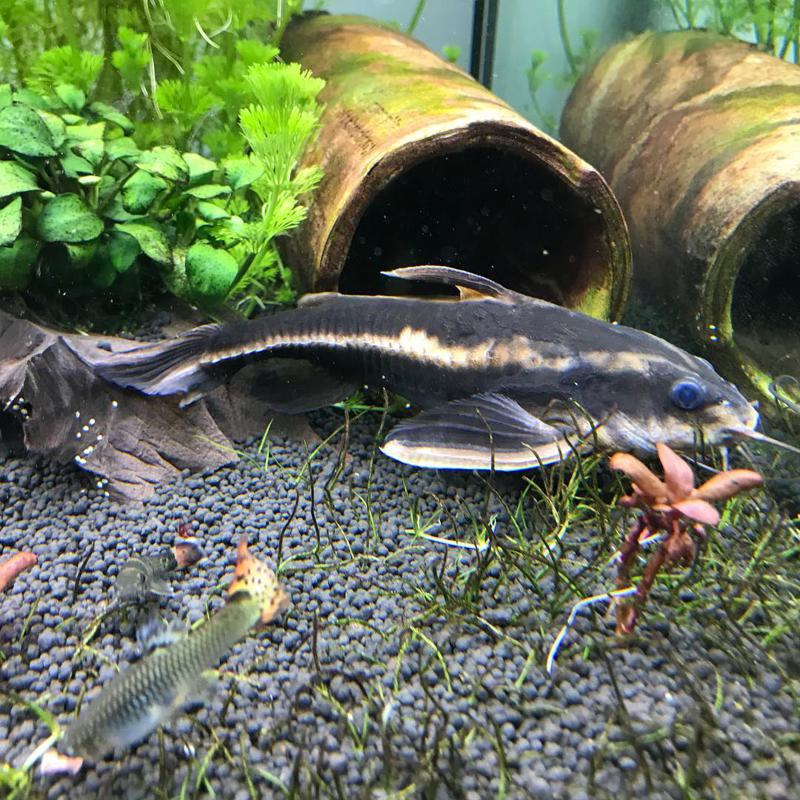
| Common Names | Talking catfish, chocolate doradid, chocolate catfish, thorny catfish |
| Scientific Name | Platydoras armatulus |
| Average Adult Size | 5 – 6 inches |
| Lifespan | 5 – 10 years |
| Minimum Tank Size | 55gallon tanks |
| Ideal Temperatures | 74 – 80 degrees Fahrenheit |
| Ideal pH Levels | 6.5 – 8.0 |
| Diet | Omnivorous |
If you need a jovial catfish that can be entertaining and gorgeous looking at the same time, then the Striped Raphael Catfish is the one for you. The catfish belongs to the Doradidae family and originates from many parts of South America.
The nocturnal fish are not visible most times of the day but are very peaceful and get along with many freshwater fish. They are also known for their mesmerizing chocolate-colored body and sharp fins that give them the name ‘thorny catfish.’
13. Glass Catfish
| Common Names | Ghost catfish, phantom catfish |
| Scientific Name | Kryptopterus vitreolus |
| Average Adult Size | About 5 inches |
| Lifespan | 5 – 8 years |
| Minimum Tank Size | 45-gallon tanks |
| Ideal Temperatures | 70 – 80 degrees Fahrenheit |
| Ideal pH Levels | 6.0 – 8.0 |
| Diet | Omnivores |
Glass Catfish have a transparent glass body due to the lack of a body pigment. You can see the fish’s heart beating through its scaleless and colorless body.
What is more exciting is that the glass catfish can create incredible rainbow colors when light shines through its body at certain angles; it’s a sight to see.
A tank filled with a school of more than five glass catfish is best. It is an easy fish to care for since most of its diet consists of zooplankton and other small invertebrates in the tank.
They are also known to eat smaller fish and mosquito larvae.
14. Tiger Shovelnose Catfish
| Common Names | Tiger sorubim, caparari |
| Scientific Name | Pseudoplatystoma tigrinum |
| Average Adult Size | Up to 3 feet |
| Lifespan | 18 – 25 years |
| Minimum Tank Size | 200-gallon tanks |
| Ideal Temperatures | 70 – 80 degrees Fahrenheit |
| Ideal pH Levels | 6.0 – 8.0 |
| Diet | Omnivorous, mostly protein-rich meat diet |
As the name suggests, the tiger catfish is gorgeously attractive because of its special tiger patterns that extend from the head to the fins and tails. It is also unique based on its long lifespan and massive size that can grow up to 3 feet.
This is not a good recommendation for beginners but more on the side of the experienced aquarist. The hardy fish is one that will stick around for ages.
15. Asian Stone Catfish
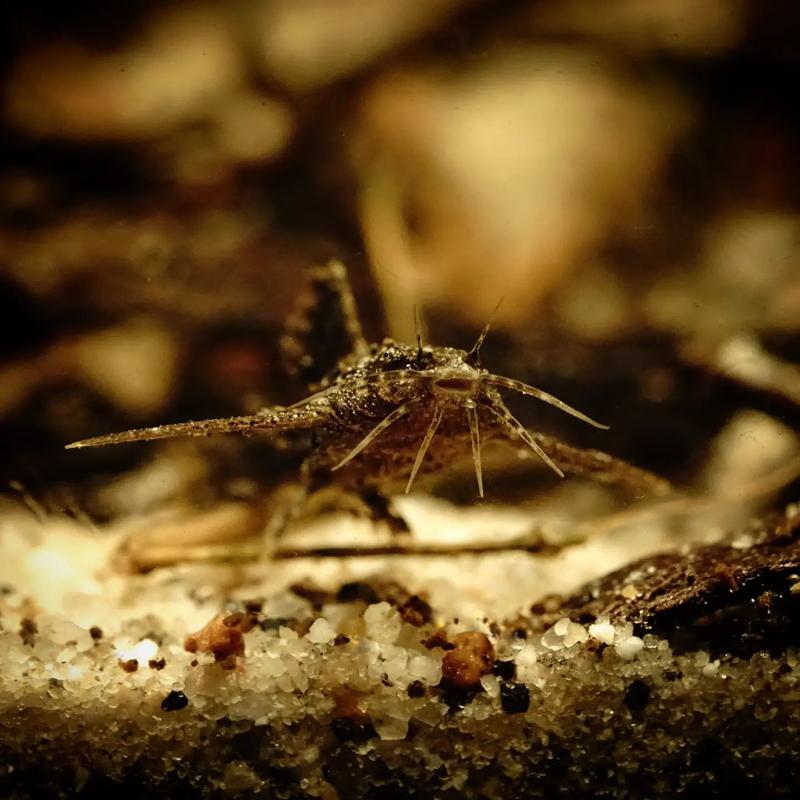
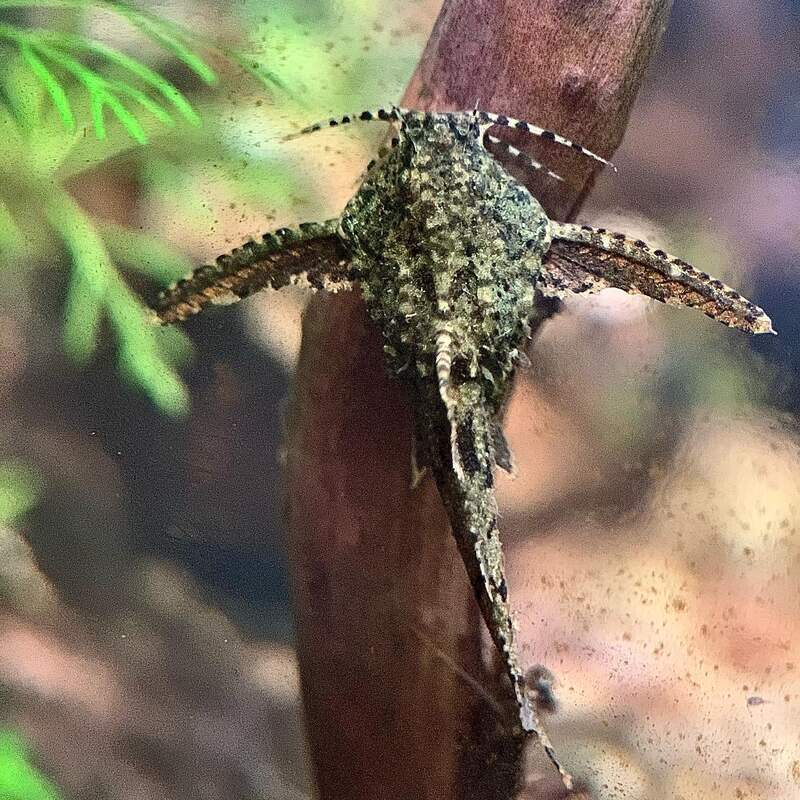
| Common Names | Sylhet Hara, dwarf Anchor catfish |
| Scientific Name | Hara jerdoni |
| Average Adult Size | 1 to 1.6 inches |
| Lifespan | 5 – 6 years |
| Minimum Tank Size | 15gallon tanks |
| Ideal Temperatures | 70 – 80 degrees Fahrenheit |
| Ideal pH Levels | 6.0 – 8.0 |
| Diet | Omnivores, but mostly small live foods like bloodworms |
The Asian stonefish is native to Asian regions, including Northeastern India and Bangladesh. They are small hardy fish with one-of-a-kind catfish bodies that look like rocks, with rough textures and rocky edges.
The stonefish blend well among rocky surroundings, and it is easy to miss them with their brown and gray bodies and peaceful, still nature.
Colors vary from green to grey to brown to white, but the most common are the grey and brown Asian catfish that are readily available in most online pet stores.
Since they are mostly inactive, this species is easy to care for, and they often feed on live food in the tank, hence minimizing maintenance.
Read More:
Final Thoughts
So, are catfish good for aquariums? These abundant types of fish are the easiest to raise breeds in the hobbyist space.
They are hardy, feed on a wide range of foods, both live and commercial, and can live for more than eight years without much care.
